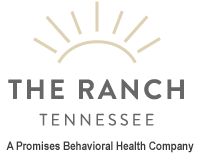Humans are hardwired to give and receive touch. As infants, it’s the way we explore the world around us. Even before we can see clearly, our skin — the largest organ in the body — is in contact with our environment. Newborn bodies respond to the temperature in the room, the texture of whatever is swaddling them, and the sensation of whoever is tending to them. A sense of well-being ensues when touch is nurturing. Scientists attribute that feeling to oxytocin, a hormone secreted by the pituitary gland in the brain. According to an article by osteopathic physician Joseph Mercola, DO:
- Oxytocin decreases the level of stress hormones the body manufactures and lowers the blood pressure response to anxiety-producing events.
- Oxytocin likely plays a role in why pet owners heal more quickly from illness, why couples live longer than singles, and why support groups work for people with addiction and chronic disease.
- Oxytocin has been found to reduce the cravings of drug and alcohol addiction as well as for sweets.
Benefits of Human Touch
For many people in recovery, nurturing, non-sexual, non-violent, consensual touch may be limited or non-existent. When a person is isolated from others who could provide the comfort of hand-holding, hugging or cuddling, depression has a greater opportunity to take over the emotional state. Low-touch environments are contributing factors in mental health challenges. National Public Radio (NPR) reporter Michelle Trudeau speaks about the reasons touch has benefits: “If a teacher touches a student on the back or arm, that student is more likely to participate in class. The more athletes high-five or hug their teammates, the better their game. A touch can make patients like their doctors more. If you touch a bus driver, he’s more likely to let you on for free. If a waitress touches the arm or shoulder of a customer, she may get a larger tip.” In the NPR segment, Matt Hertenstein, PhD, an experimental psychologist at DePauw University in Indiana, notes studies from England that focus the brain’s orbital frontal cortex, which “responds to sweet tastes and pleasing smells.” According to Dr. Hertenstein: “A soft touch on the arm makes the orbital frontal cortex light up, just like other rewarding stimuli.” Because the brain is seeking pleasure, this soft touch is a safer alternative than reaching for a bottle or pills. In a Daily Health Postarticle entitled “9 Compelling Reasons Why You Need Hugs Every Day,” Josh Richardson offers an explanation: “Dopamine is responsible for giving us that feel-good feeling, and it’s also responsible for motivation. Hugs stimulate brains to release dopamine, the pleasure hormone. Dopamine sensors are the areas that many stimulating drugs such as cocaine and methamphetamine target. The presence of certain kinds of dopamine receptors is also associated with sensation-seeking.”
How to Give and Get Nurturing Touch
Options for sharing the benefits of nurturing touch include:
- Petting an animal
- Volunteering to be a “hugger” for the Special Olympics
- Visiting people in nursing homes and offer hugs
- Participating in a Free Hugs event
- Asking those closest to you if you could share a hug
- Hugging a tree
- Experiencing professional massage
- Treating yourself to a manicure and/or pedicure
- Attending a 12-step meeting, where members are greeted with hugs
A commonly quoted recommendation by family therapist Virginia Satir could just as easily be written on a prescription pad: “We need four hugs a day for survival, eight hugs a day for maintenance, and 12 hugs a day for growth.” By Edie Weinstein, LSW @EdieWeinstein1


